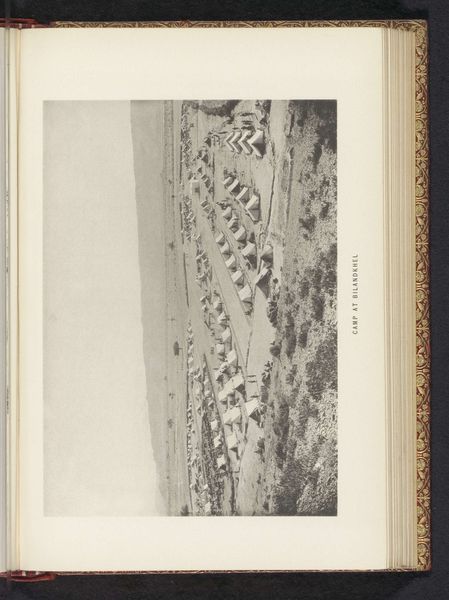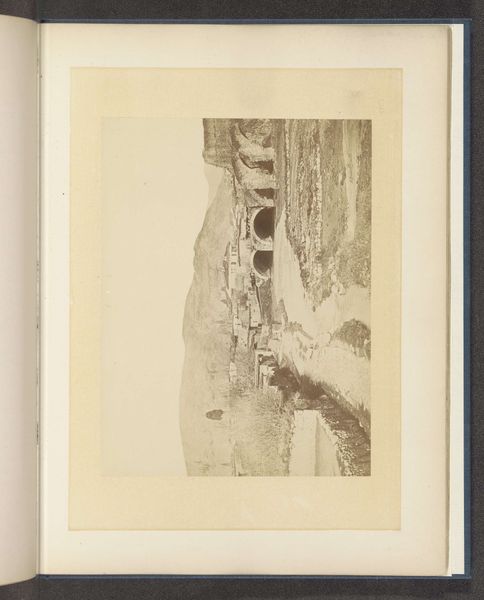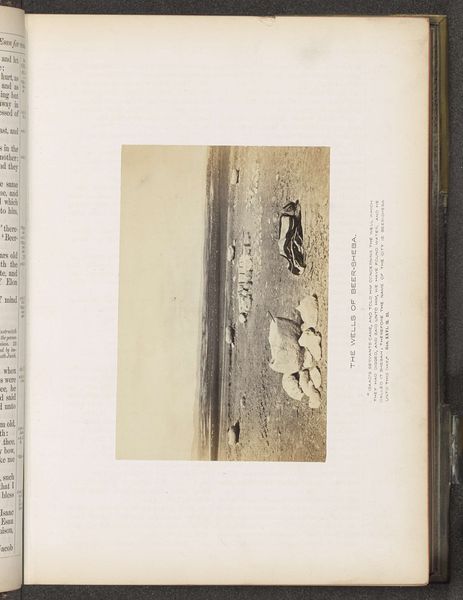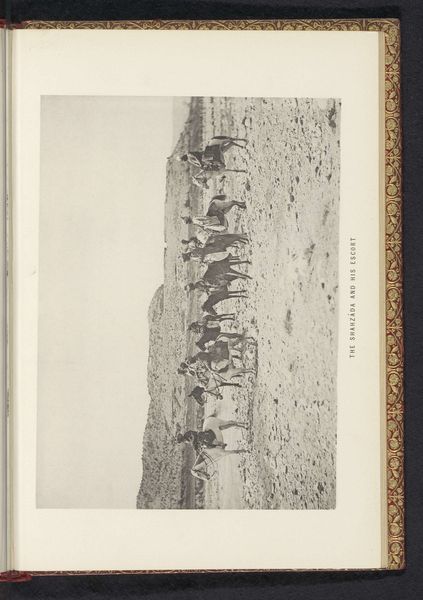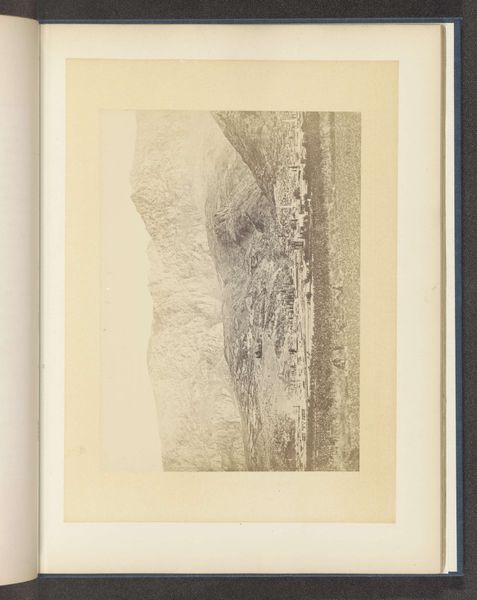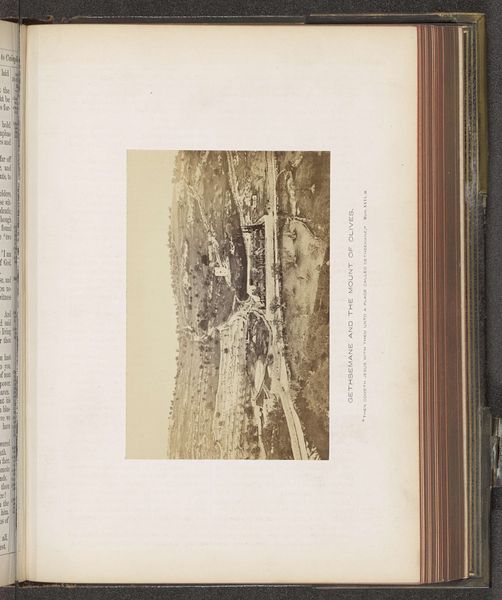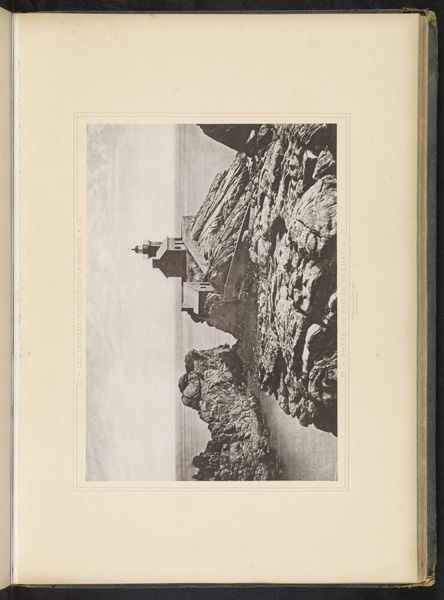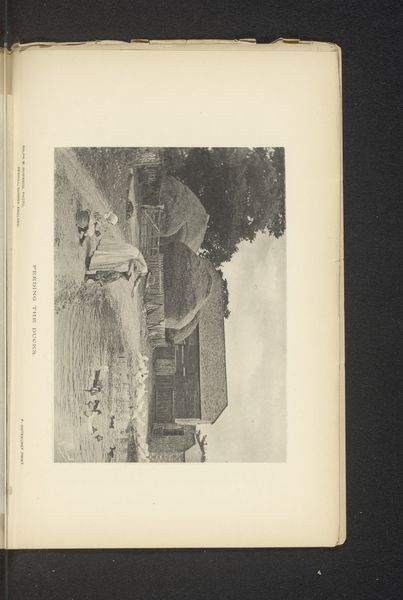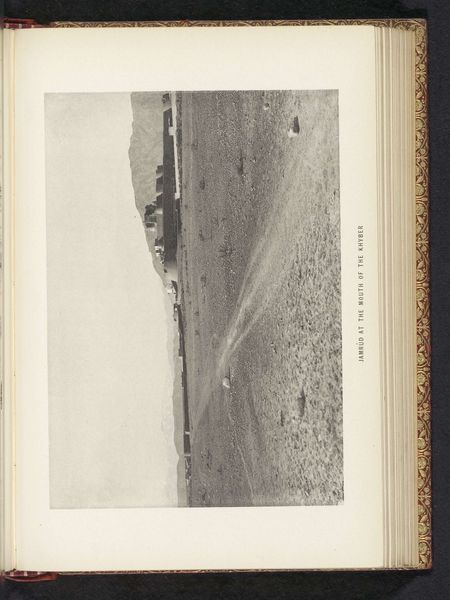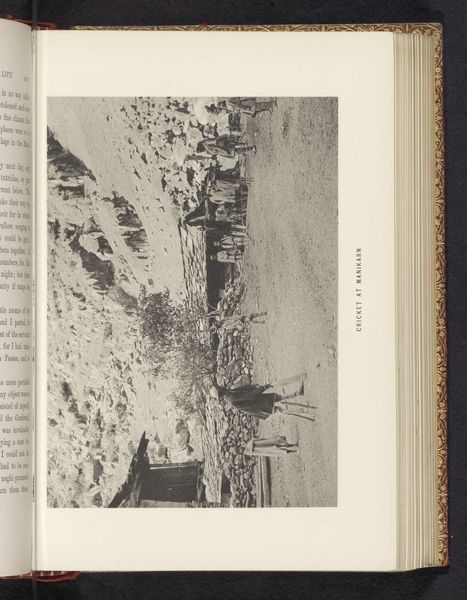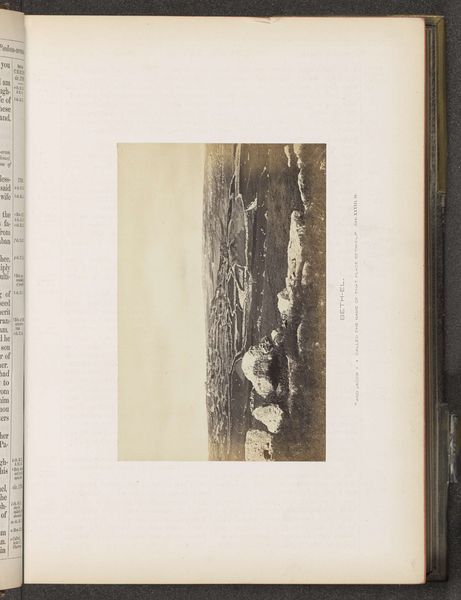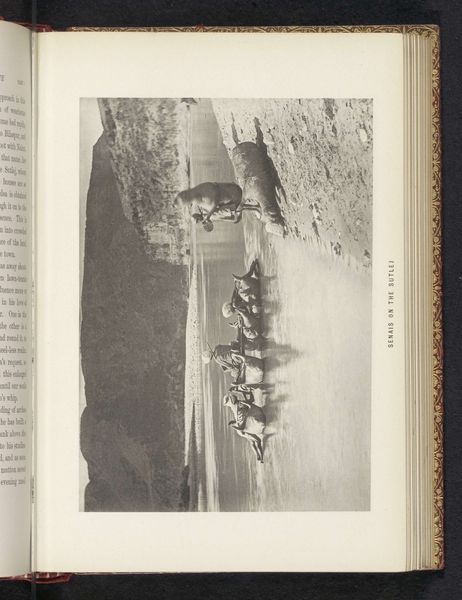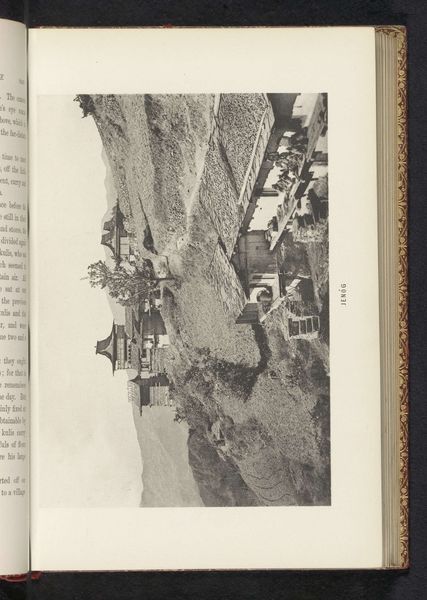
photography, gelatin-silver-print
#
landscape
#
photography
#
coloured pencil
#
orientalism
#
gelatin-silver-print
#
realism
Dimensions: height 120 mm, width 163 mm
Copyright: Rijks Museum: Open Domain
Curator: Frederick Saint John Gore's photographic work, "Looking Down the Kuram Valley near Ahmedzai," created before 1895, offers a window into a distant landscape and time. Editor: It's immediately striking how the composition uses the rugged foreground, filled with rocky textures and small shrubs, to frame the distant vista. A palpable sense of depth pulls the eye toward the horizon. Curator: Absolutely. It exemplifies the orientalist style prevalent at the time. Landscape photography such as this wasn’t simply about capturing topography; it played a role in constructing the image of the region for a Western audience. Consider how framing the local figures in the terrain might impact a Westerner's view of people from the Kuram Valley. Editor: Focusing purely on form, the grayscale print creates a restricted palette, allowing a keen interplay of light and shadow. The linear quality of the valley is interesting, creating this clear distinction between the cultivated bottom, contrasted against the foreground's more textured terrain. Curator: Yes, and there’s an institutional dimension here too. Gore, working as a British military officer, participated directly in the colonial project, which naturally influences how one interprets the subjects and their representation in this image. How do the compositional techniques he's employing align or diverge from colonial perspectives prevalent in Britain at the time? Editor: I suppose, as the foreground appears rather undisturbed, the piece hints at the sublime. One is confronted by something immense, but not altogether impenetrable. The work itself, by its aesthetic design, reflects a push and pull with the landscape it is meant to simply depict. Curator: A subtle detail but how it ends up positioned within an album transforms the way viewers then and today engage with the image and its history. I find it interesting to view the entire presentation as one object of study, particularly what this historical image does today. Editor: So, considering it all, it is more than a mere picturesque landscape. Curator: Precisely. We begin to understand how landscapes such as this, viewed through a specific lens, also function as political objects.
Comments
No comments
Be the first to comment and join the conversation on the ultimate creative platform.
